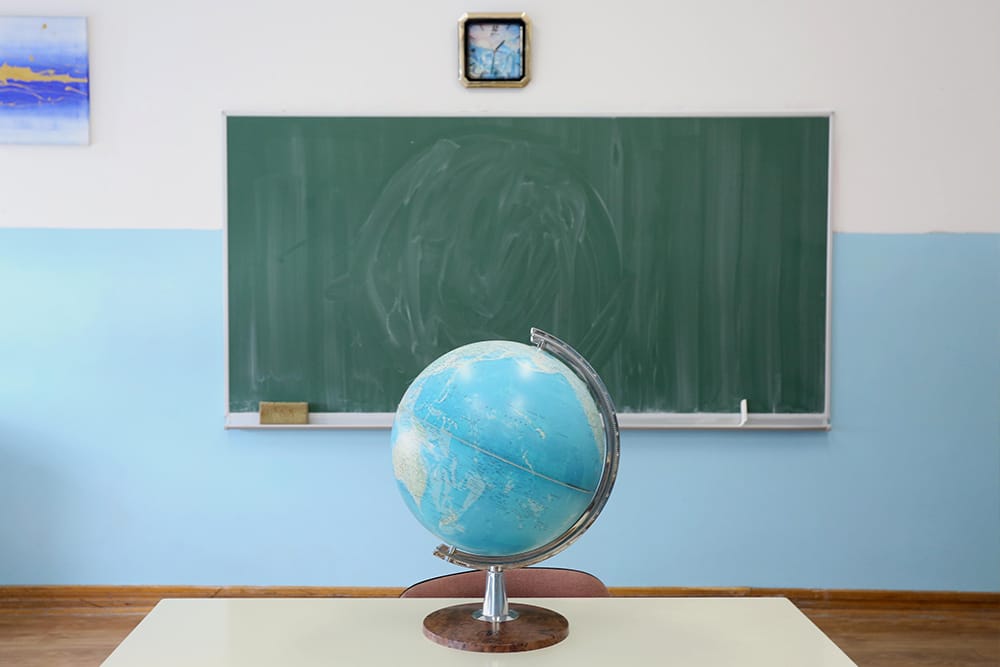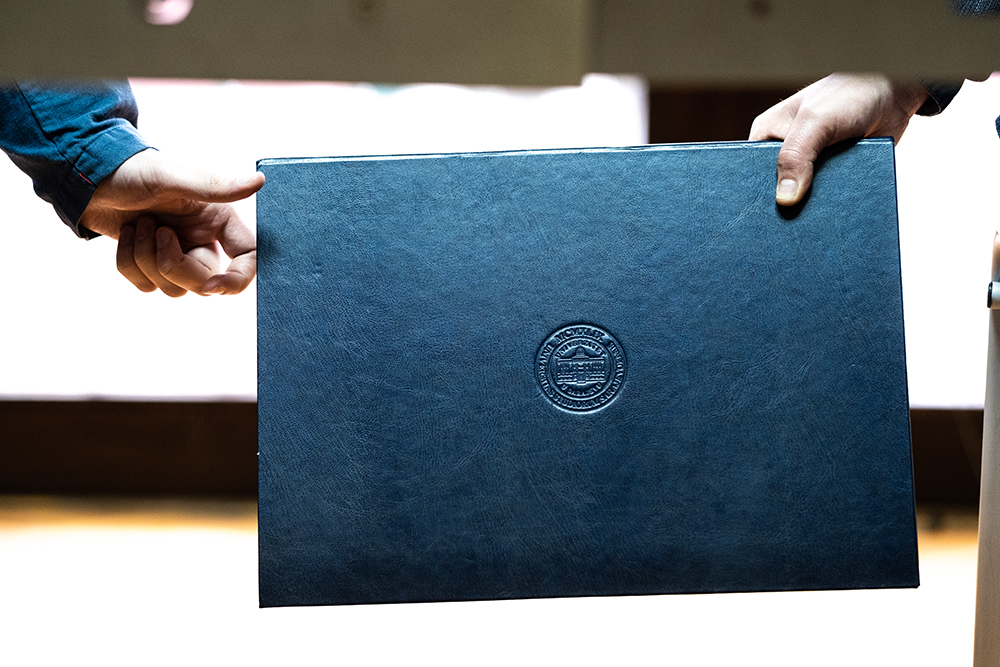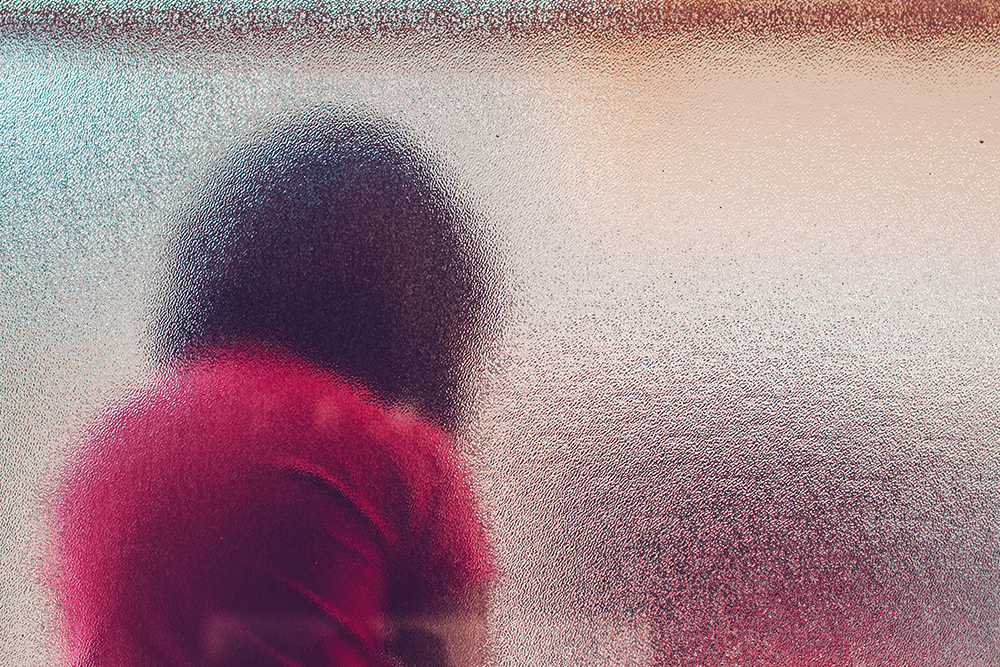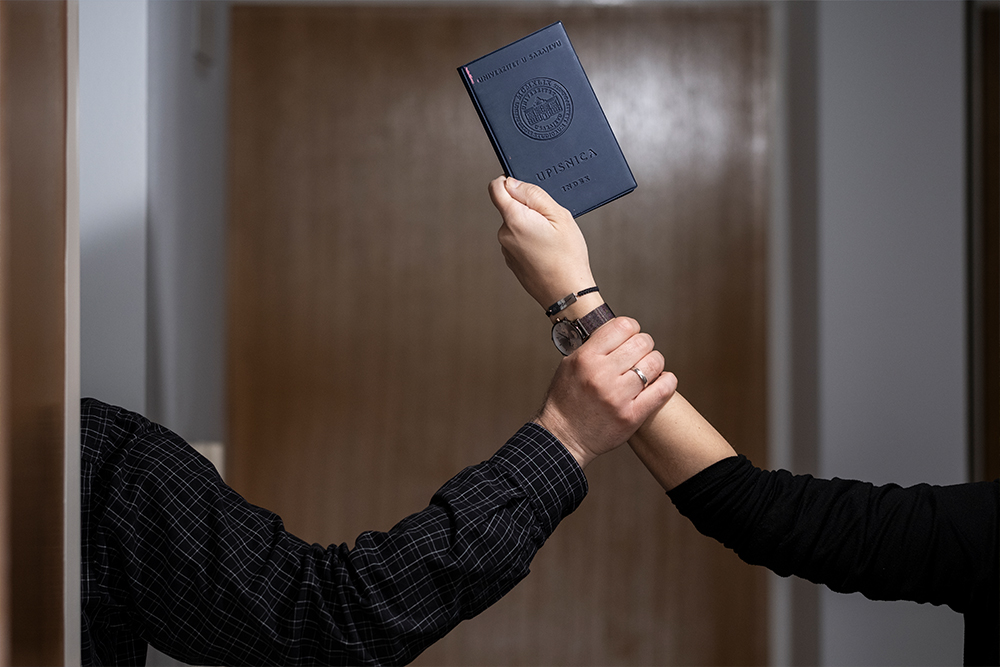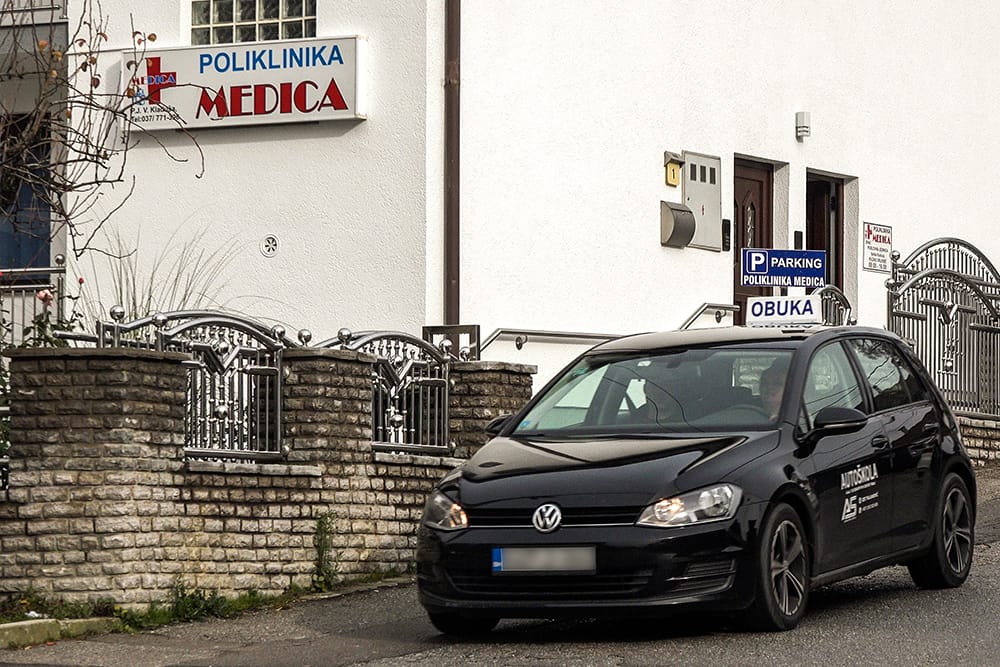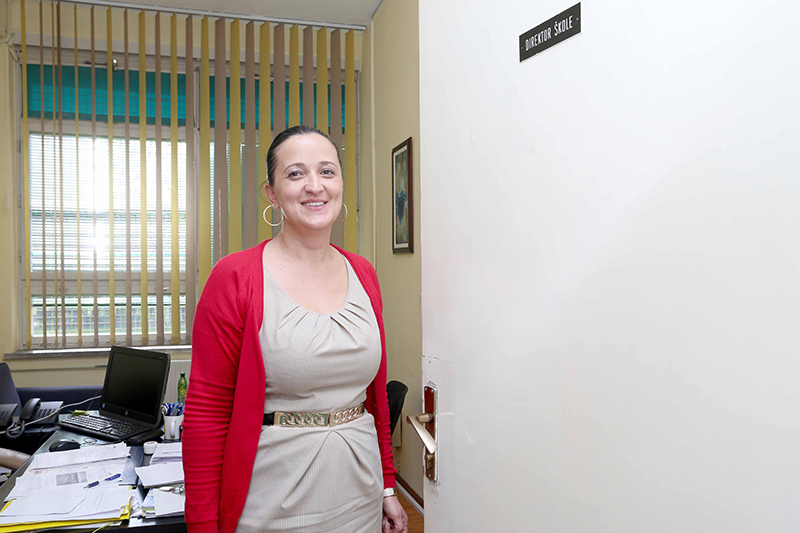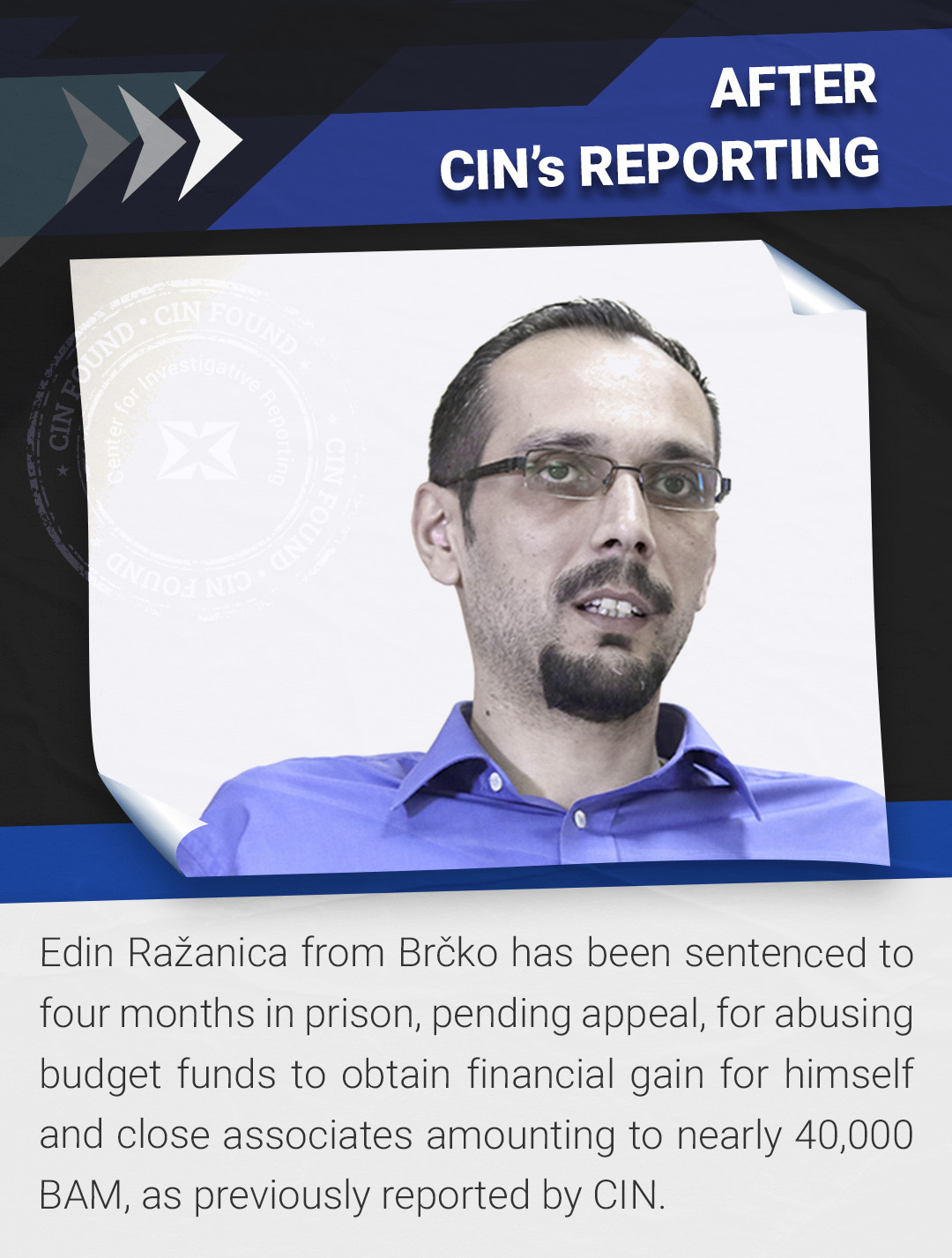Stefan Moravac is nine years old. He goes to the fourth grade of the Elementary School in Pale. Fifteen minutes away is one of the cultural centers of his country, where his parents lived until 1996.
But Stefan has only been to Sarajevo once and that was to go to the zoo with his aunt, who still lives in the city.
Therefore, Stefan has never had the benefit of what Sarajevo could show him: his cultural history that goes back long before the factional hatreds that produced the last war, and a cultural present that is being made every day by a new generation.
Stefan has never been to a cinema. He has never seen a production in the National Theater. He has never heard of the National Museum or the Historical Museum.
Stefan also does not know that he may never get to see these institutions because there is no guarantee that future funding will be provided by state and entity governments that have placed the country’s priorities elsewhere.
The story about what BiH children are being taught about their past is part of a series of seven articles, “Losing Culture,” by a team of reporters from the Center for Investigative Reporting in Sarajevo. The series investigates BiH’s post-war approach to protecting the past it used to share before the reorganization into two entities.
Stefan and most of the thousands of other school children in both entities have not been affected by a new national school curriculum, introduced in 2003, that was supposed to guarantee a multicultural education for all of BiH’s children, according to educators in both entities.
The curriculum’s multicultural promise has only brought new text books, which include the history of all three of BiH’s ethnic groups.
But reading about a country’s culture is a little like being told about the flavor of an apple without tasting it, said one educator. Children need to see their culture and experience it, educators told the CIN team. But cultural education, like so much else in BiH, is still controlled by the heritage of political agendas from the war.
Children of Stefan’s age, born eight to fifteen years ago, are the best indicator of the cultural status of the country, according to Ivan Lovrenović, a well known writer and social commentator. Their memories do not include the war and recent political history so their heroes are a good indicator of what cultural legacy they are being given, Lovrenović said.
For example, Lovrenović said, recent research, conducted by the University of Banja Luka Psychology Department in 2004, found that the biggest heroes of 14 to 20 year-olds were former Yugoslavian president Josip Broz Tito, Bosnian Serb leader Radovan Karadžić and WWII Serbian nationalist Draža Mihajlović.
“That’s what we have now,” Lovrenović said. “That is just lunacy.”
The core curriculum developed by the two entities’ ministries of education with the Organization for Security and Cooperation in Europe (OSCE) was aimed at teaching children from both entities what they shared in common as citizens of BiH. The core curriculum replaced the separate entity curriculums beginning with the 2003 school year. It guaranteed that “all children shall have the possibility to acquire a quality education in integrated and multi-cultural schools, free of political, religious, cultural and other prejudice.”
Vojo Starović remembers when no one needed to tell educators that BiH had a rich shared cultural history that all BiH children needed to know about.
As a young student from Foča in the RS, Starović, 48, traveled to Sarajevo in the “Train to Theater” program sponsored by schools, museums and the Bosnian republic’s train company. The program brought Starović and his classmates to the capital, not only to see the capital or theater, but also to take advantage of all the cultural events.
Starović recalls rushing to the theater to see the play “A House Lamented” by Rodoljub Čolaković, and the ballet “Swan Lake.”
Then there was the magic of the Baščaršija.
“There were some of us who were late for a play at the National Theater because of ‘ćevapčići,’” Starović said wistfully.
To this day, Starović added, he and his schoolmates still remember the museum exhibition called “Izložba na tlu Jugoslavije od prahistorije do danas” (Exhibition on the territory of Yugoslavia from prehistory until today), which was seen by the great majority of schools in former Yugoslavia.
The kids of the Pale school in the RS where Stefan goes have been many places but never to the Federation, not even Sarajevo, admits principal Radoslav Kujundžić.
The school made a trip to Višegrad when they had an opening ceremony for the monument dedicated to Serb revolutionary Ðorđe Petrović Karađorđe, and to Tršić to see the birthplace of the creator of Cyrillic, Vuk Stefanović Karadžić. The school even has mutual agreements to visit with Italian schools, Kujundžić said.
Kujundžić’s own children have had the chance to “fit” into other culture. His daughter, now 27, got an English degree in Norway and his 30 year-old son has an economics degree from Scotland and now lives in Rome. When they talk about cultural heritage in BiH, they talk about the whole country, not an entity, Kujundžić said. And when their friends visit from abroad the first place they take them is to Sarajevo.
Kujundžić said he has plans to give Stefan and his classmates the same opportunity for the first time this spring.
“We have plans to visit the National Museum this spring if it is still open,” Kujundžić said. “We’ll pay a visit to the Bey’s Mosque and Orthodox Cathedral, but we first need to request consent of the parents.”
At the Banja Luka Elementary School they have already tried a trip to Sarajevo, courtesy of the OSCE and, according to principal Tatjana Radoja, they will not be trying again.
“Last year we had one visit to Sarajevo as a part of OSCE project, in June. There were some reactions on the part of parents when we told them that children would go to Sarajevo,” Radoja said. “Ninety pupils have been there and have returned in disappointment. They did not do well in that environment.”
There was no threat of physical safety, Radoja added, but the students felt psychological pressure during a children’s festival at the Skenderija Sport Cultural Center. Security procedures at the show forced all children, including the Banja Luka group, to be searched before entering. The children were already apprehensive about going to a city that had been through a war.
“They were not feeling well,” Radoja said. “Probably they felt some nationalistic pressure fearing they would be provoked.”
During a photography workshop children were singing the “Let’s go BiH” sports anthem, commonly sung at football games. The anthem is a national song that embraces both entities but Radoja said she and the teachers believe the children were traumatized by the singing, which the Banja Luka students did not participate in.
Before the June trip the school had not gone to Sarajevo for ten years, and now they have no plans to go back, Radoja said. Instead, school outings will visit monasteries and partisan monuments in the RS, and historic memorials in Serbia and Montenegro. The school also has a sister-school in Sweden.
Teachers and principals in both entities are free to choose where they want to take students, Radoja points out. But neither entity wants their children to go to the other, Radoja said.
There is also apparently no attempt in the classroom to teach RS children about the other groups they share BiH with.
“As much as they learn about us, that’s what we learn about them, only the basics,” Radoja said. “We do not teach about the culture of the other two peoples, apart from what is in the (new) history, geography and language textbooks.”
The result of cultural isolation in school will be children who grow up with the alienation of their parents, Radoja added. Despite a state curriculum guaranteeing cultural diversity, cultural education seems to be going the other way.
“Each ethnic group turned to its own people, its own culture, and its own customs,” Radoja said. “We have still not reached the level where we can preserve our own tradition and respect the tradition of others.”
At the West Mostar 10 primary school, the teachers and parents do not want to risk sending their children on excursions to the RS, according to Hazira Pantić, a counselor at the school.
“We’ve never been to Trebinje. It never crossed our minds,” Pantić said. “Nowadays we can start thinking about it but it was not really safe to go there before.”
The school makes regular trips within the Federation to Sarajevo and the old Franciscan church in Stolac. And they make yearly trips to all parts of Croatia, Pantić added.
But trips to the RS have simply been thought to be too frightening.
The first time Pantić went to a seminar in Banja Luka there was an incident in the hotel involving a colleague that she did not want to explain.
“I didn’t feel very comfortable, so we never considered taking children to Trebinje because the security environment was not established at the time,” Pantić said.
Even the children of internationals, who are promoting a multi-cultural society for BiH, are not necessarily experiencing that diversity.
In Sarajevo’s International Elementary School there are 234 children from 22 different countries, including 180 from Bosnia and Herzegovina and the sons and daughters of the world’s ambassadors to BiH. Annual tuition for Bosnians is 2,000 euros and for foreign citizens 4,000 euros. The school employs 30 teachers, 16 of which are Bosnians and 14 Turks.
One of the students, twelve-year-old Semra Čirić, described the people of her country as “Bosnians.” Semra said she might show the Bašèaršija, Mostar and the River Una in Bihać to a newcomer to her country. However, she would not show them Višegrad or Banja Luka because she said she knows nothing about these cities.
Her classmate Arman Suljo, 13, has been on excursions to Croatia and Turkey but has never been the few miles inside the RS to Jahorina mountain, famous for the Olympic games in 1984.
Principal Ismail Yapici, 37, who has two of his own children in the school, said the students go on trips to Sarajevo’s libraries and museums and to Bjelašnica and Igman mountains within the Federation. There are plans for a spring trip to Mostar. But there are no trips anticipated to the RS, and the school is not saying why.
“No one from the school will answer that question,” said Mensura Deović, a school administrative assistant, who said principal Yapici refused to be re-interviewed on the question. “Leave that question open. We will not answer it.”
In Tuzla Canton, the Ministry of Education has recommended that schools take their students on excursions to the RS but nobody is listening, according to deputy minister Hazim Halilović. Most schools make excursions within the Federation, he added.
The minister said that expenses were an issue, but he admitted that it cost no more for a trip to Banja Luka or Bijeljina than it did to Sarajevo.
In any case, he added, the ministry has no control over the schools since they pay for the excursions.
“We cannot do anything about it, we don’t have that kind of influence over schools,” Halilović said before hanging up the phone.
Meanwhile, the Skender Kulenović elementary school in Sarajevo calls itself a “multicultural” institution.
Principal Aida Musić, an educator for 28 years, said she does not think of Banja Luka or Višegrad as the RS but as a part of BiH. Three of her Bosnian students have already taken a day trip to Rudo in the RS for a journalism class, she said.
Students can only learn so much about Bosnia and Herzegovina’s mix of cultures out of text books, even the new ones devoted to diversity, Musiæ said.
“A child cannot tell the smell, color or taste of an apple by being told about it,” Musić said. “The same applies to teaching. It is necessary for the children and culture to meet each other.”
Instead of a sister school in Italy or Sweden, Musić’s school has a tie to Sveti Savo from Lukavica in East Sarajevo in the RS. The students visit each other’s schools regularly and soon the Sveti Savo choir will perform at Skender Kulenović school.
Musić said that “unity in diversity” is inevitable.
“Such visits will happen (in other schools), because if children learn about Bosnia and Herzegovina, that means that they have to learn about Republika Srpska too,” Musić said.
A broader education in domestic culture is more than a nice idea to Musić. Without a genuine cultural heritage to rely on, children will go elsewhere for their heroes and their identity.
Musić referred to an OSCE estimate according to which nearly 92,000 young people have left Bosnia and Herzegovina from 1996 to 2001. According to the same estimate, even today nearly one fourth of the youth would like to leave BiH for good. Musić said BiH parents should ask themselves why their children know more about US culture than they do about the historical traditions of their own country before there were two entities.
Making sure that children know about real culture takes a large committment, Musić added. Excursions cost money. For example, a day excursion in BiH costs 50-70 KM, which is as much as in other places abroad. It is hard to convince parents to invest in a local trip when for the same money they can send their children to Turkey, Hungary or Italy, Musić said.
But BiH does not have the financial committment to giving its children a true cultural legacy, according to the director of the National Theater in Sarajevo, Gradimir Gojer, a long-standing cultural worker and a former minister of culture.
The only children’s project in Sarajevo this year, organized by the Ministry for Culture, Sports and Education, presented three operas, which were attended by 1500 children.
“Nowadays, Sarajevo does not have a specialized institution in which children may consume culture,” said Gojer. Even the institutions that do some programs do not have staff trained to work with children.
But to give children a cultural heritage they will remember, committment is as important as money, according to one cultural worker.
From 1997 to 2003, Susanne Prahl, brought back the days of the “Train to Theater” program. She was director of the children’s program of the Sarajevo Film Festival. Her goal was to give the children of Bosnia and Herzegovina the chance to see the same films their peers around the world have seen. This year she did the program on her own. Prahl funded the program by convincing international donors that the project was important.
Prahl, a 40-year-old German film director from Kiel, came to Sarajevo in 1994, and married a BiH citizen. With her two children she later toured the local countryside in her van. She often wondered how the children in the villages would ever get to see a film. The parents would have to take a day off from work, and then there were the expenses of the trip.
“In other words, they would never come to Sarajevo,” Prahl said. “Then I thought ‘why shouldn’t I make an individual project in order to bring those children to the city for a day?’“
This year nearly 25,000 children visited the seven-day festival in June from all over BiH. They came by buses and trains and many of them wrote Prahl with experiences similar to Vojo Starović, who had made the same trip in the 1960s.
“The children know a lot. We were stunned with some of their letters…,” Prahl said. “…Your children are very creative, good and want everything.”
According to Prahl, all they need is someone who wants to show them their culture, and a few train tickets.

